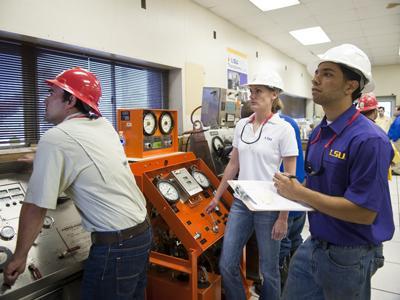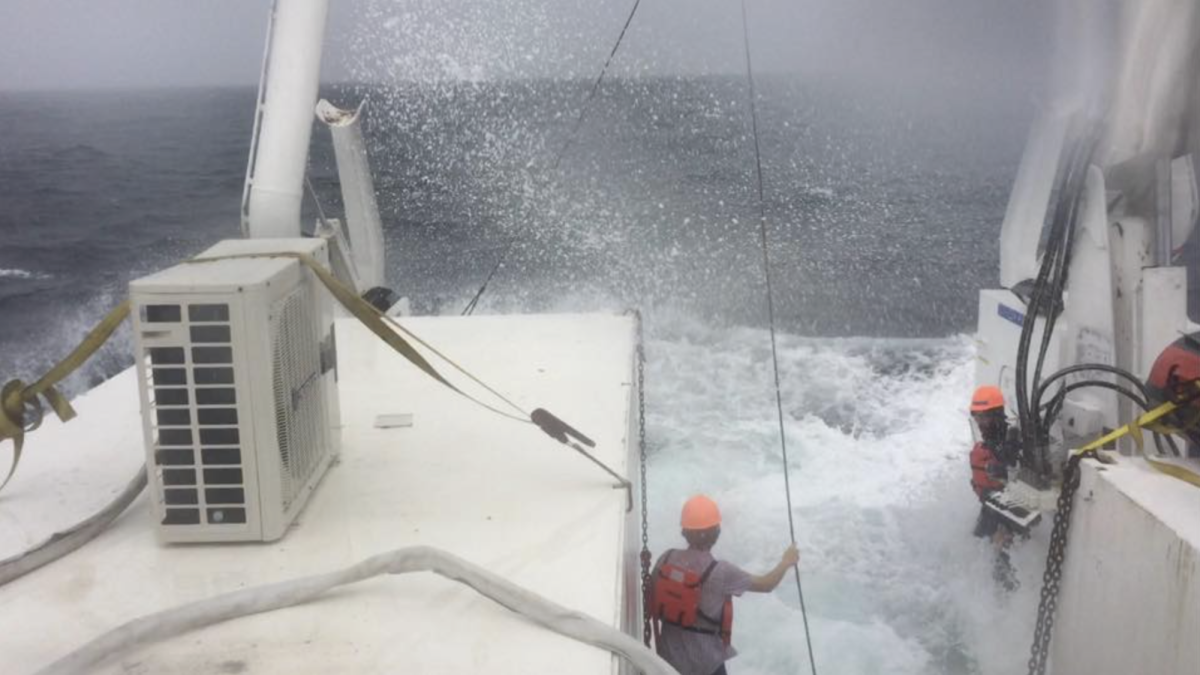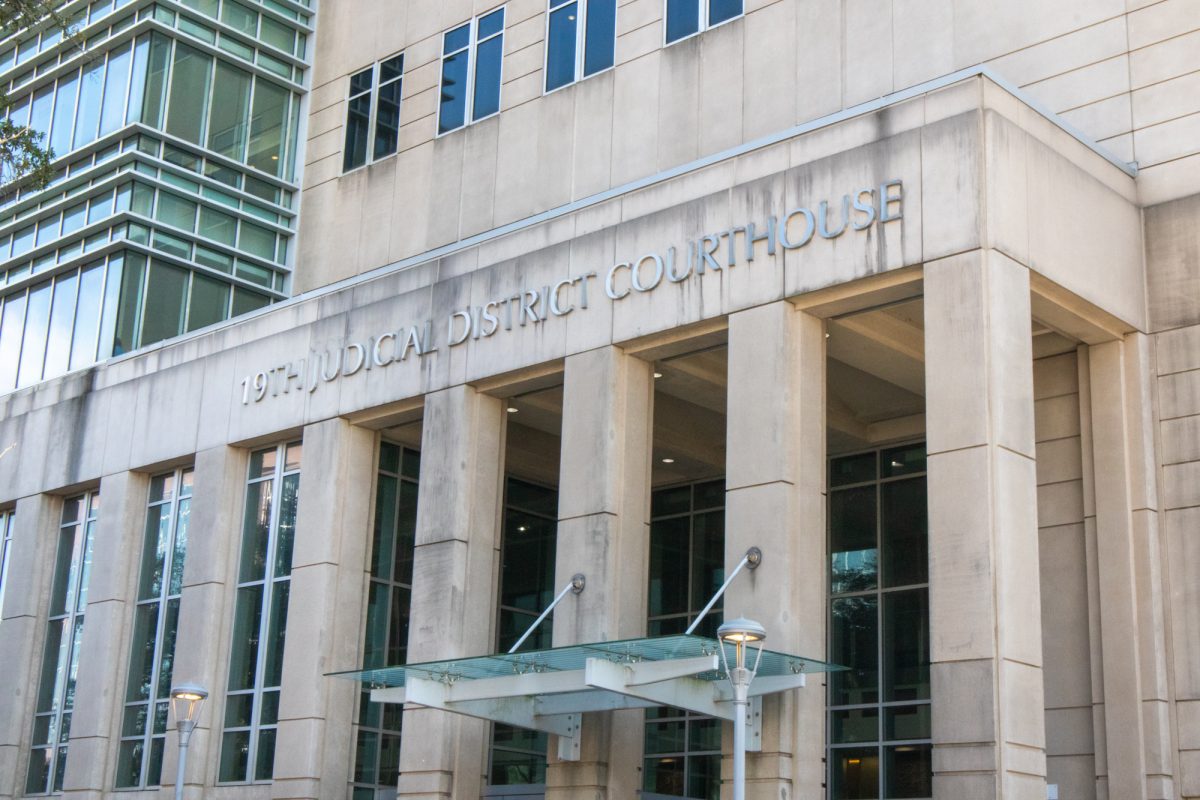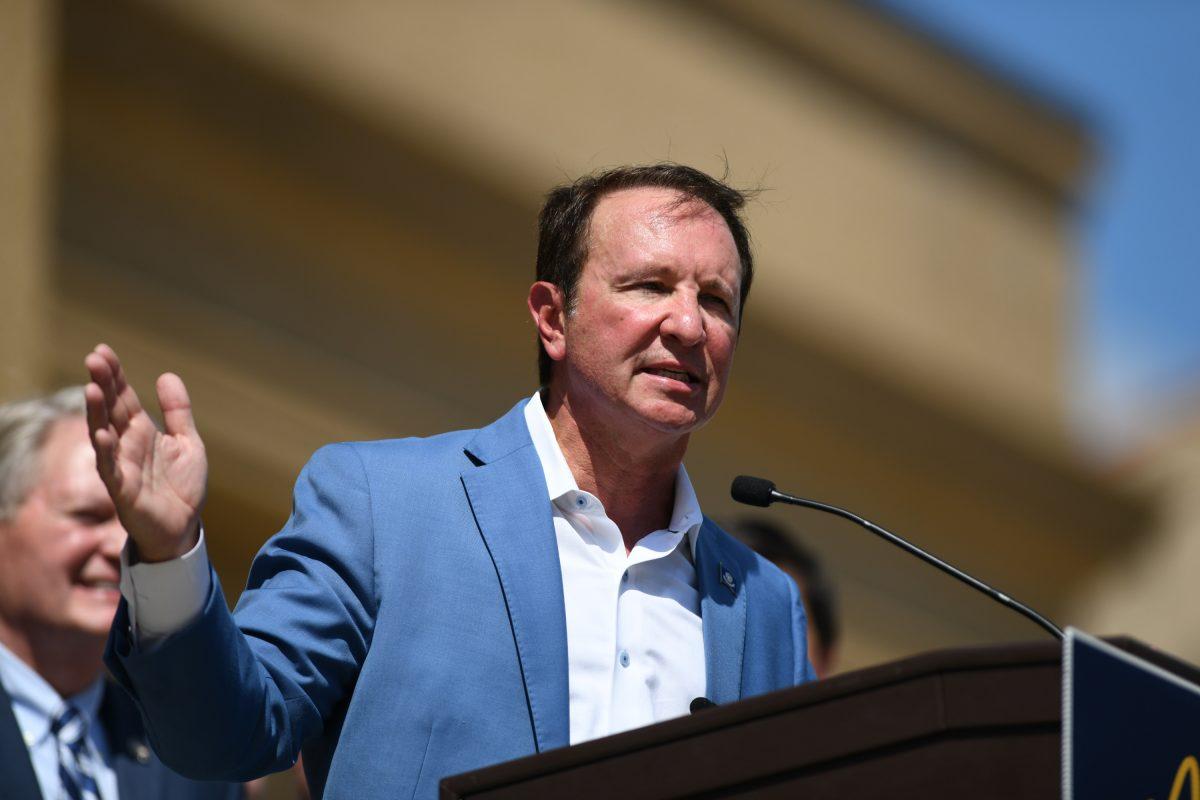A group of four students work together on a project, discussing options and taking action.But instead of in a classroom, these students work in a room of industrial controls and monitors. They wear hard hats, check pressure readings and open choke valves causing a wild flame to burn atop an oil rig relief tower.These students, all petroleum engineering majors, study and work at the Petroleum Engineering Research and Technology Transfer Laboratory, tucked behind Alex Box Stadium on Gourrier Lane. The facility, which opened in 1981 with funds provided by the U.S. Minerals Management Service, gives the University a place to train students and workers in the field and allows researches to explore well-control methods. It is the only one of its kind operated by a university in North America. “In University education, we’re trying to build fundamentals to help when students encounter any challenge,” said John Smith, an associate professor in the Craft and Hawkins Department of Petroleum Engineering who teaches at the facility. “There’s no question what we’re doing now is real.”Smith guided four students through an exercise in proper well control this past week during a media demonstration to show how students at the University prepare for real-world problems, like the ones resulting in the April 20 explosion of the Deepwater Horizon oil rig.”Shut down the pumps and do a flow check,” senior David Matthews told his peers after the team detected a “kick” of gas pressure coming through the well.Senior Hassan Ramzi then led sophomores Candice Miller and John Cleveland to relieve the pressure by controlling the choke, which releases the gas atop a relief tower outside the control room, where a flame grows larger as the students flush out more pressure. These exercises are part of the required curriculum for petroleum engineering majors, Smith said. All of the approximately 400 undergraduate and 40 graduate students gain hands-on experience at the facility during two courses. Forty-eight students graduated in May with a Bachelor of Science from that department, Smith said.PETE 3037, or Petroleum Field Operations, introduces students to the field operations associated with production engineering and familiarizes students with field equipment, pneumatic and electronic safety systems and fluid flow measurements, according to the University’s General Catalog.In PETE 4060, or Prevention of Oil and Gas Well Blowouts, students learn the causes of and how to detect well kicks, as well as how to properly handle those kicks to prevent a blowout, or uncontrolled flow, from the well by using “methods and techniques currently used in the oil and gas industry,” according to the catalog.Smith also showed parts used at the facility that are similar to those involved in the BP disaster, including several blowout preventers, or BOPs. Many of these instruments are simply smaller versions of the equipment used on the Deepwater Horizon. For instance, Smith showed a “blind-sheer ram” BOP, which uses two sharp blades to come together, sheer a pipe and seal together stopping the well. “They have not been able to get a tight seal,” Smith said while showing how the 3 and 1/16 inch sheers seal together. “Only on [the BP rig] the sheers were closer to 18 and 3/4 inches, which would be too big for me to pick up.”
– – – -Contact Nicholas Persac at [email protected]
Students gain petroleum engineering experience
June 9, 2010

(Left to right) Petroleum engineering sophomore John Cleveland, sophomore Candice Miller and senior Hassan Ramzi work on a demonstration June 4 at the Petroleum Engineering Research and Technology Transfer Laboratory.






